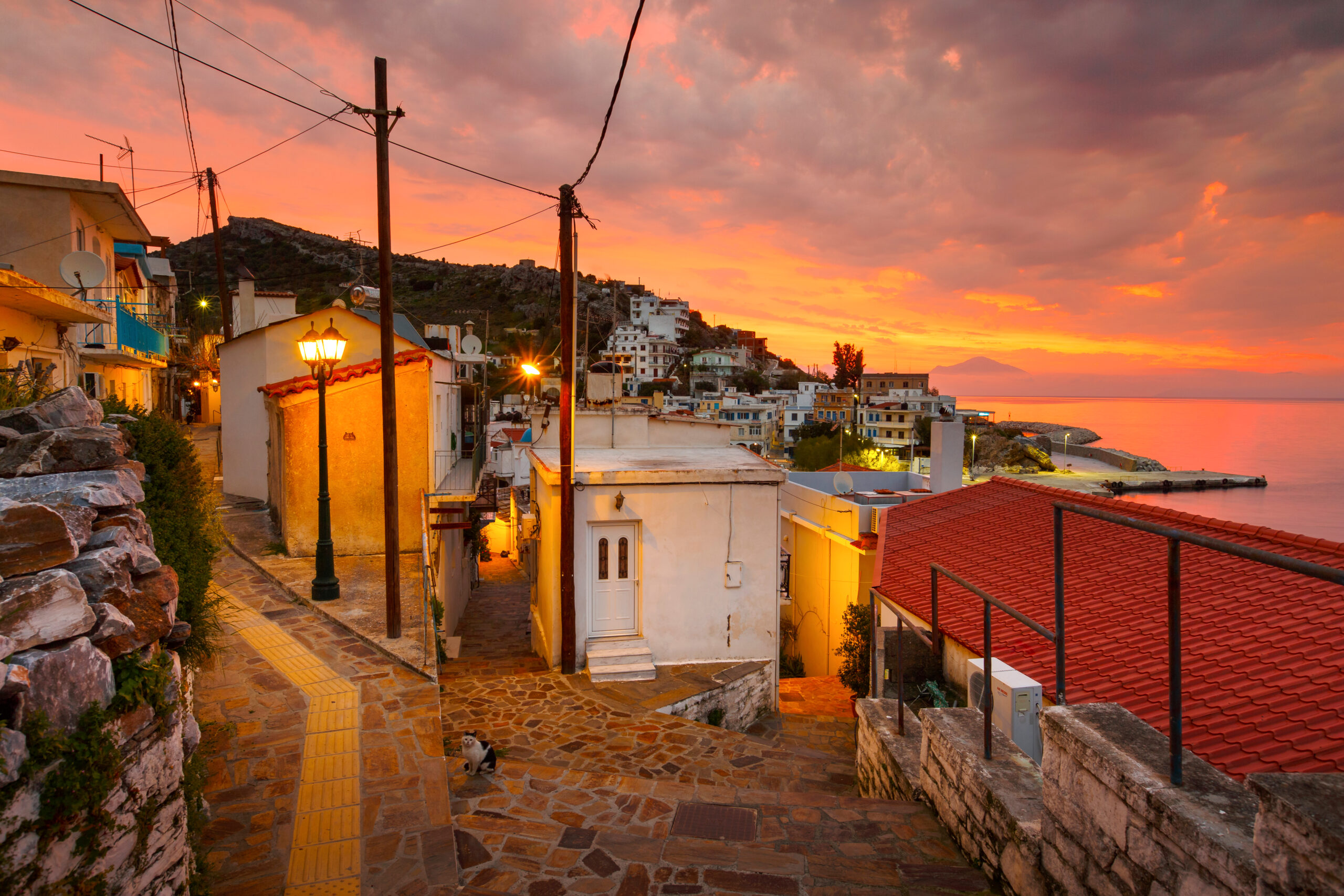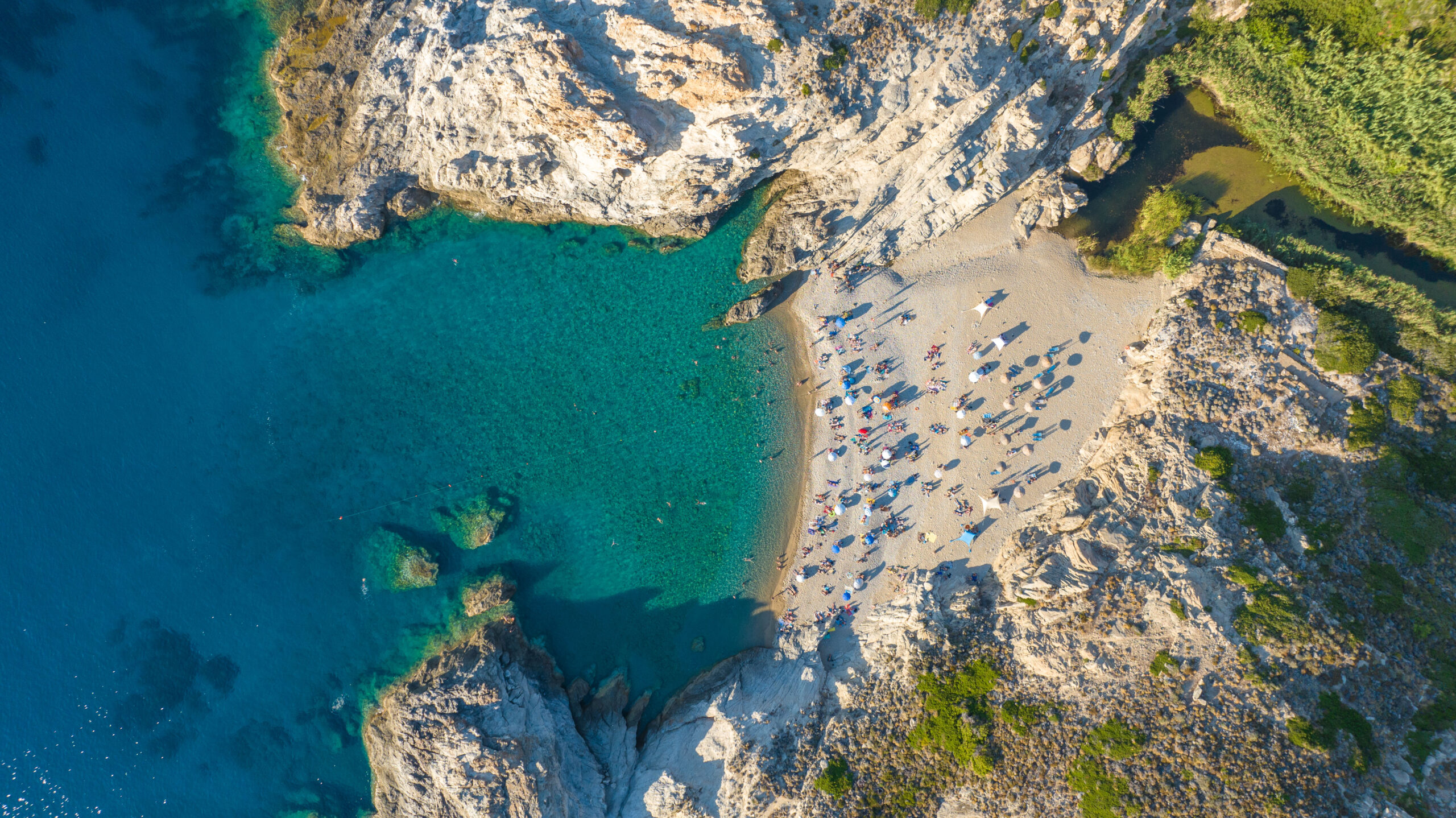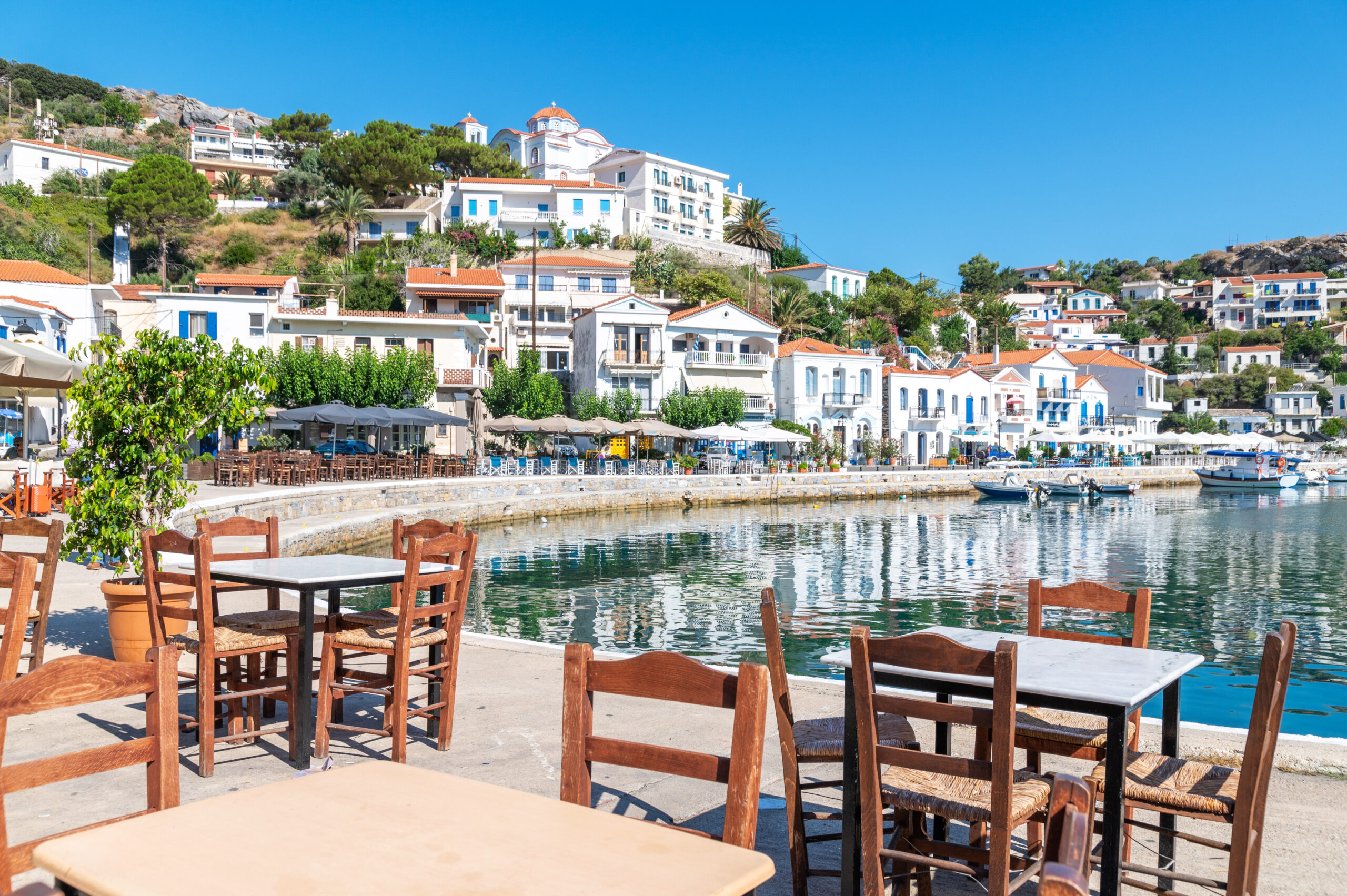Blue Zone Travel: Exploring the History, Mythology and Longevity Secrets of Ikaria, Greece

Thanks to its healthy lifestyle, simple diet and daily intake of red wine, the Greek island of Ikaria has been declared one of world's five Blue Zones. Photo: Gatsi/Getty Images Photo: Gatsi/Getty Images
The opposite of jet-set Santorini, the isolated Greek island of Ikaria lets you skip the tourist hordes and immerse yourself in pure Greek culture. One of the five regions in the world that qualify as Blue Zones – places where hearty locals routinely live to 100 or longer – beyond its beautiful beaches, pastoral coastal drives, saltwater hot springs, ancient ruins and wine from the gods, Ikaria is rich in centuries of unique history and mythology.
Thirty miles off the coast of Turkey, Ikaria takes its name from Icarus who, per Greek mythology, plunged into the sea in this beautiful locale. Shame he drowned instead of swimming ashore. Legend also has it that this small, 255 km² island in the Aegean Sea was the birthplace of Dionysus – god of wine and pleasure.
Ikaria’s more recent, interesting history saw 13,000 left-wing dissidents exiled to the island during the 1946-1949 Greek War of Independence. Then home to just 11,000 inhabitants, the impact on the island was considerable and enduring. The new arrivals included a prodigious swath of bohemian creatives – poets, writers, academics, artists, and composers, including Mikis Theodorakis, who wrote the score for the nation’s most famous film, Zorba the Greek –many of whom remained on the island.
Their descendants remain to this day on the craggy island that earned the moniker “red rock” for its socialist values. With its modern Blue Zone distinction, Ikaria has experienced another unexpected evolution – this time, as a healthy lifestyle mecca. The last decade has seen a slew of longevity retreats, integrative health clinics, natural skin care lines, surf camps, yoga and Pilates studios spring up around the island, along with hucksters keen to cash in on its new status as a global wellness hub.
The island’s main port towns, Evdilos and Agios Kirykos, are most convenient places to stay. The picturesque capital of Agios Kirykos, just Agios to the islanders, dates back to the 16th century and offers a wider range of waterfront bars, eateries and boutiques, while the postcard fishing village of Evdilos, which sprang up in the early 19th century, is quieter and more upscale. Inland amenities are limited and it’s easy to hire a taxi or rent a car to other parts of the island.

Book a room – or, at the very least, a table – at Thea’s Inn. This is where author Dan Buettner stayed while studying the island for his Blue Zones project. Traveling with friends or family? The three-bedroom, 19th century Villa Chrisafo sits in an orchard that’s a two-minute drive from the beach. A mountain path from the hilltop Monopati, an eco-property with a trio of airy, kitchen-equipped suites, winds down to the cerulean sea. Or how about a whitewashed loft, or a stylish little house by the Therma mineral baths? Or a 1600s stone house nestled amongst the fruit trees, olive groves, grapevines, herb and vegetable gardens of a working farm? Then there’s a “pirate house,” so named for Ikaria’s unique architectural history of building homes that were imperceptible from the sea to ward off marauders – a problem so pervasive that islanders destroyed their own port as a deterrent in the 14th century.
Wildflower-edged roads cut through mountains for scenic drives and the coast is ringed in gorgeous beaches – pebble or golden sand, lively or secluded. Seychelles beach, by the village of Magganitis, is loved for its rock escarpment and crystal-clear waters; the charming harbour town of Armenistis has a few tavernas and the long sandy shores of Messakti and Livadi; the idyllic Yaliskari can be found just beyond that. The village of Faros has a pebble beach and historic ruins while the tiny fishing village of Gialiskari is edged by towering pine forests. Nas beach is stunning, though known for its strong currents, and lesser known Iero cove is often deserted.

In Therma, you’ll find the island’s famed saltwater mineral baths. The Greeks were the first to discover the curative powers of mineral hot springs and the island is scattered with sites formed in fissures along its coast. But the waters of Therma, once the private spa of Greco-Roman royalty, are famous throughout Greece, and beyond, and weren’t open to the public until the 20th century.
Sequestered in a waterfront cave outfitted with pools, showers, and a hammam – the town’s simple, inexpensive municipal spa Spilaio Thermal Springs – is heated by the magma below. The radon content and intense heat of these waters – between 45C and 53C – is said to remedy a variety of ailments: arthritis, neuralgia, gout, sciatica and kidney disease to skin problems, fertility issues and anxiety.
The island’s other celebrated restorative pleasure is its signature Pramnian wine, which dates back to the 8th century BC writings of Homer, who refers to it in The Iliad. A strong red made from sun-dried grapes and aged in clay casks, it takes its name from Mount Paramos, birthplace of Dionysus, and is considered his gift to the islanders, who drink it daily. In fact, its fabled health benefits are central to Ikaria’s Blue Zone status; organic Pramnian wine contains very high levels of antioxidants. Family owned vineyards dot the inland landscape. Afianes Wines has an elegant wine bar; the 500-year-old Karimalis Winery offered four, rustically charming guest suites and rooms tucked into a pair of historic farmhouses; and the Tsantiris Winery is perched 450 meters above the sea on the edge of the Halari Gorge, where lakes, rivers, and waterfall are traversed by ancient stone bridges.

Ikaria’s Blue Zone distinction is also centred on a locally sourced, herb and plant-rich diet with lots of olive oil, herbal tea, milk, Omega-3 rich fish, whole grains, and beans. As well as milk, cheese and meat sourced from goats, not cows. The island’s raw honey, rich in antioxidants, amino acids, and vitamin C, is used to treat ailments from tummy upsets to cuts, colds, and flu.
The Mediterranean whole foods nutrition regimen of Ikarians is enhanced by everyday physical activity such gardening or walking, preferably uphill. Clean air and a rugged terrain encourages an active, outdoors lifestyle – they’re also very fond of naps. One 2011 University of Athens study found that Ikarians regularly enjoyed a midday snooze, which lowers the depression and stress levels that contribute to high blood pressure and heart disease. Overall, Ikarians are almost entirely free of dementia and the chronic diseases.
And while all the Blue Zones are highly social, none is more so than Ikaria. Renowned for all-night, all-ages parties, their wine and Ouzo-drenched Panygiria festivals take place in various villages all year round, with locals — toddlers and teens to centenarians – feasting, drinking, playing live music and dancing until dawn. Studies have also shown that these Greek Islanders remain sexually active between 65 and 100 years old, and this contributes significantly to the pleasant and relaxed mood of the locals.
No wonder Icarus chose this spot to fall.
Getting there…
From Athens, book a direct 55-minute flight or the 6.5-hour ferry, which allows you stop off at other islands along the way.
RELATED:
Blue Zone Travel: A Wellness Journey to Sardinia
‘Live to 100: Secrets of the Blue Zones’: 6 Longevity Tips From Dan Buettner’s New Netflix Series